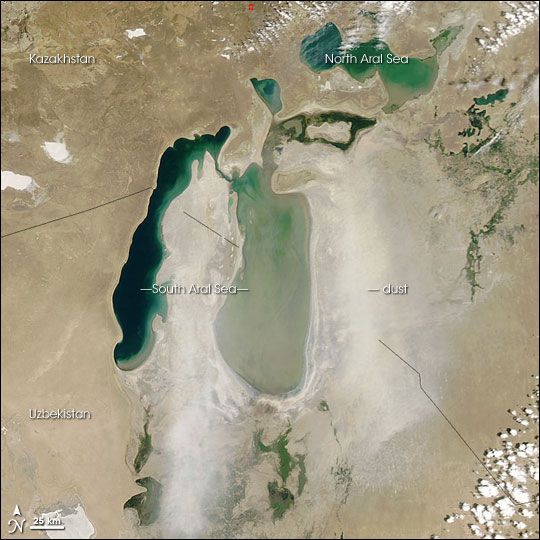Aralsk: Difference between revisions
imported>Vitaly Kulik mNo edit summary |
imported>Vitaly Kulik mNo edit summary |
||
| Line 33: | Line 33: | ||
[[Image:Aral-dust-storm2006-6-13.jpg]] | [[Image:Aral-dust-storm2006-6-13.jpg]] | ||
[[Image:aral-dust-storm2007.jpg]] | |||
[[Image:AralSea-21century-2.jpg]] | [[Image:AralSea-21century-2.jpg]] | ||
Revision as of 01:43, 12 November 2007
Aralsk (Kazakh: Арал= Aral, Russian: Аральск = Aral'sk) Template:Coor dm is a small city in Kazakhstan.
Arask Railway Station is the main Northern gateway to the Aral Ecological Disaster Zone.
There are serious health problems for tourists and the local population, caused by airborne toxic chemicals exposed to the wind by the retreating waters, and from the physical and biological agents.
February, 1956: Aralsk ground-level atomic explosion
1957-1991: Open-air testing of biological weapons
Population:
(1960) > 100,000 (including tourist)
(2007) < 40,000.
Since the retreat of the Aral Sea, after diversion of the rivers inflow, Aralsk is completely landlocked. In 1980 the Aral Sea could be seen from the town.
Aralsk was formerly a fishing port of the Aral Sea, and was a major supplier of fish to the neighboring region. Like the town of Moynaq to the south of the Aral Sea, it now has discarded rusting fishing boats sitting on what used to be the bed of the Aral Sea.
Visitors are advised not to eat fish that the local population grows in contaminated lakes, ponds and salt pans, which are poisonous. They are also advised to pack in all water needed for personal use, and not to depend on masks or air filters.
